Decorating & Design
January 5, 2017
DIY: Patterned Jute Rug
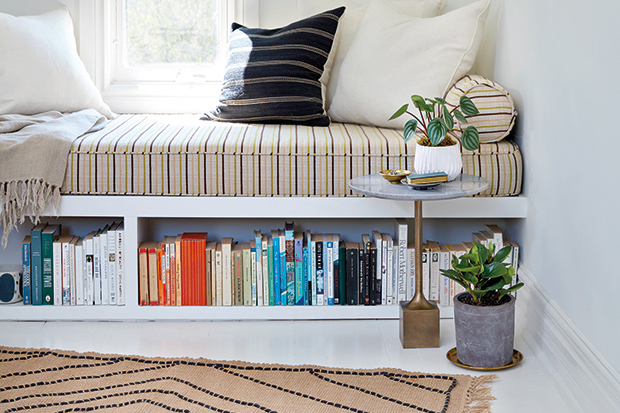
Senior editor Morgan Michener adds pattern and texture to a basic jute rug using twine and yarn.
 The fun thing about this project is that you can play with all sorts of colors and patterns, and it works with a rug of any size. You don’t have to know how to sew either — it’s just one easy stitch! Complete a 3′ x 5′ rug like mine in the time it takes to watch two movies, or pick away at it in your spare time over a couple of weekends.
The fun thing about this project is that you can play with all sorts of colors and patterns, and it works with a rug of any size. You don’t have to know how to sew either — it’s just one easy stitch! Complete a 3′ x 5′ rug like mine in the time it takes to watch two movies, or pick away at it in your spare time over a couple of weekends.
A simple jute rag rug offers a nice neutral base for this project, and the looser weave means there’s plenty of room to loop twine through.
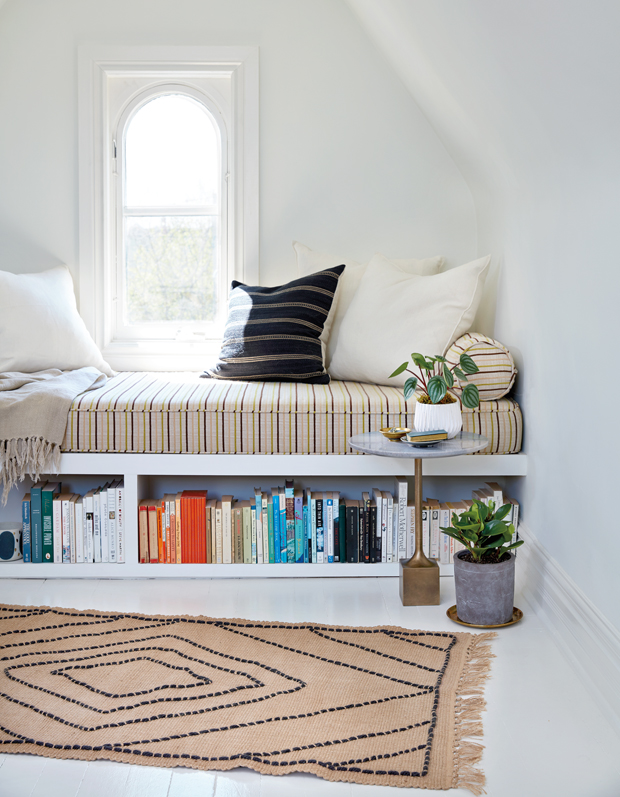
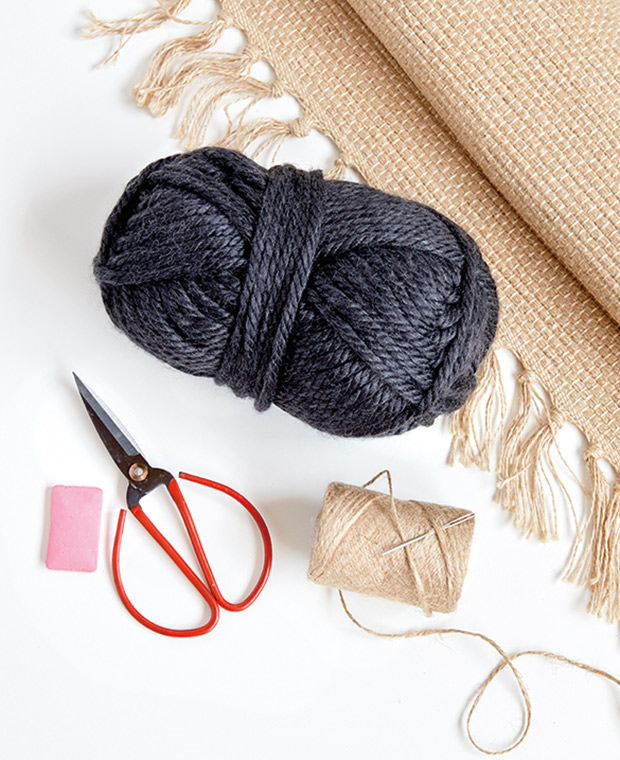
You’ll need a rug, tailor’s or regular chalk, yarn (I used a cotton-polyester blend), scissors, darning needle and thin twine.
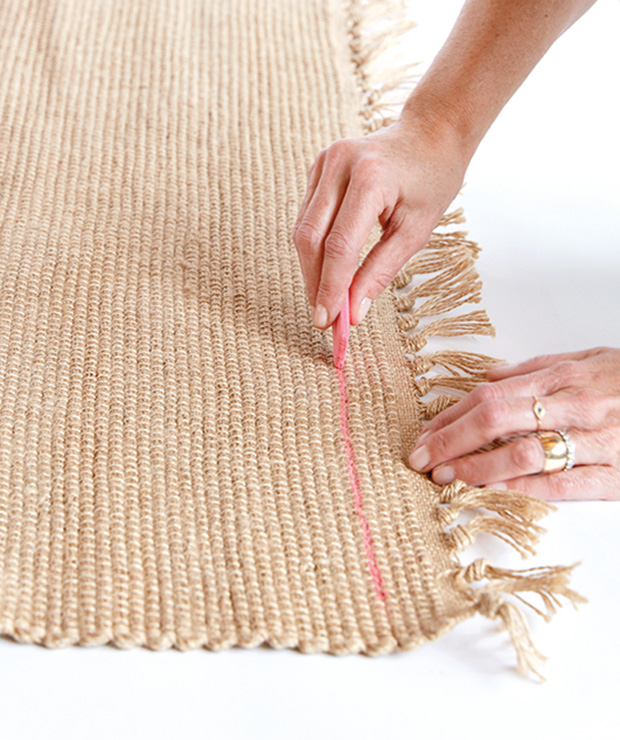
Begin by marking the border of your pattern on the rug using tailor’s chalk. Don’t worry about making perfectly straight, totally symmetrical lines — you want your rug to look handmade, not mass-produced!

This pattern was inspired by a Persian rug with a diamond medallion in the centre. After marking the border, draw a medallion in the center of the rug and work your way out, leaving a few inches in between lines.
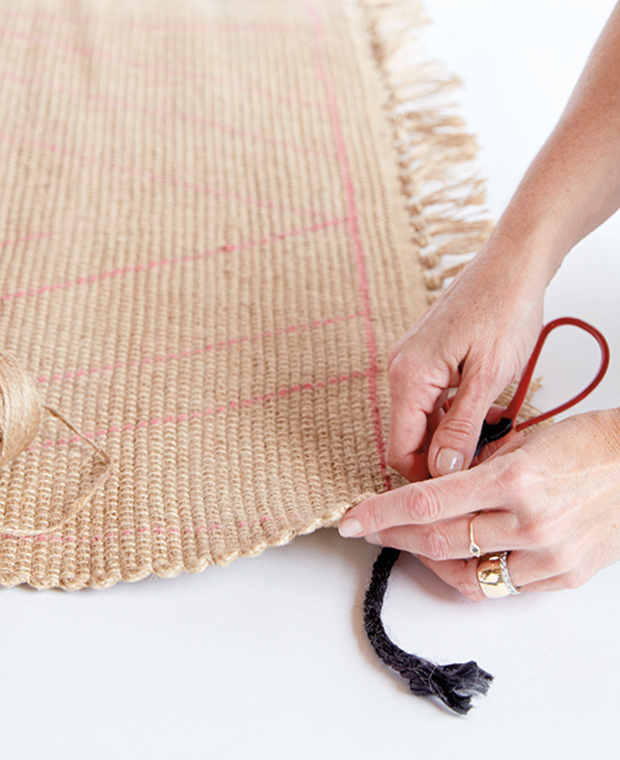
Using scissors, create a small space between the jute fibres in the corner of your rug where your chalk marks meet. Pull a few inches of yarn from the top side of your rug through the space to the underside.
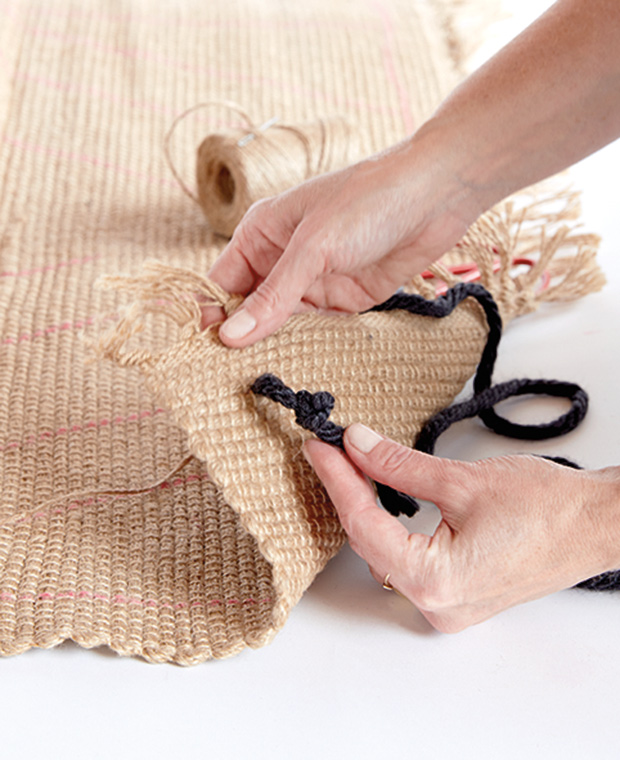
Tie a knot in the section of yarn you’ve threaded through. Ensure the knot is large enough that the wool won’t slip back through the hole.
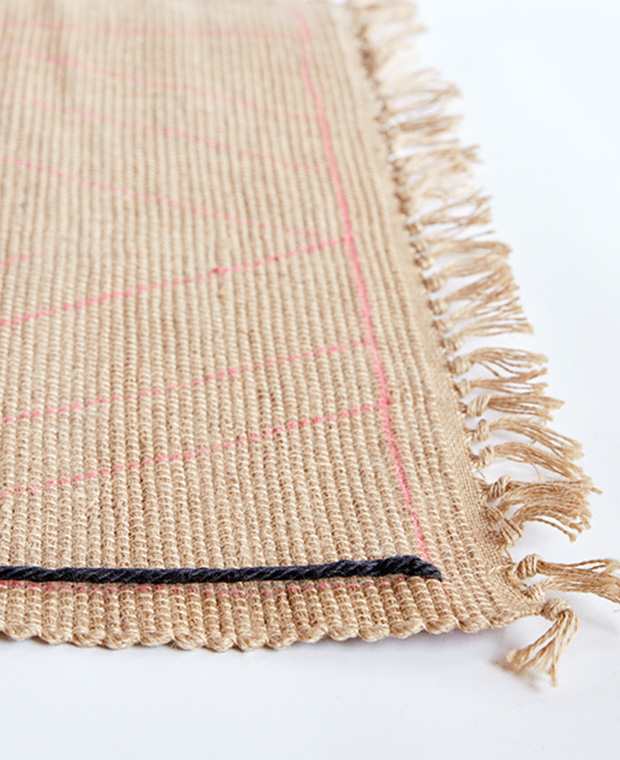
Run your yarn from one end of your border to the other. Repeat Steps 3 and 4 to anchor your yarn underneath the rug in the second corner. Repeat this process until all yarn edge lines of your pattern have been anchored to the underside of your rug in all four corners. Thread a darning needle with twine (I used butcher’s twine).
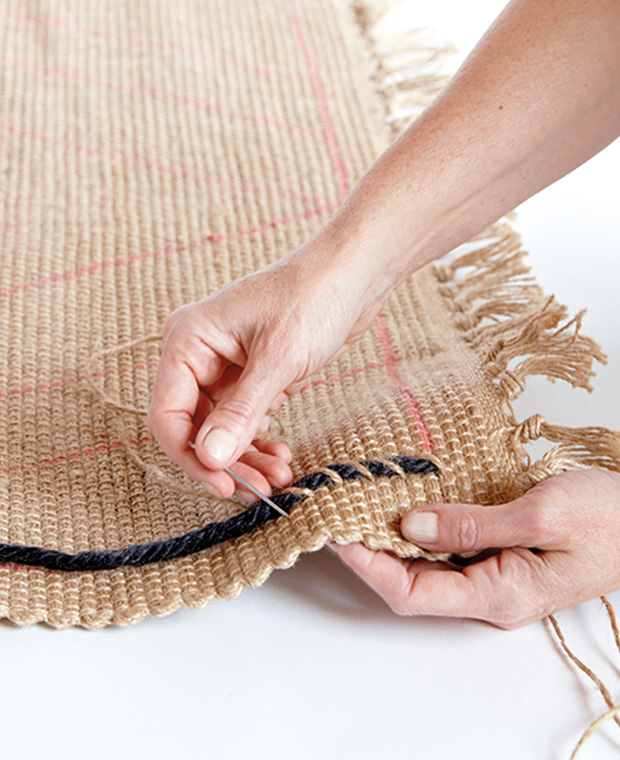
Anchor the twine to the rug’s corner by passing it through to the underside and knotting. Whipstitch twine around your yarn and through the rug. Work from one end of yarn to the other, then knot the twine underneath the rug’s corner. Tie a new piece of twine to the last piece and continue until all yarn lines are stitched. Lay your rug and enjoy!
Kim Jeffery
House & Home September 2016
Morgan Michener

